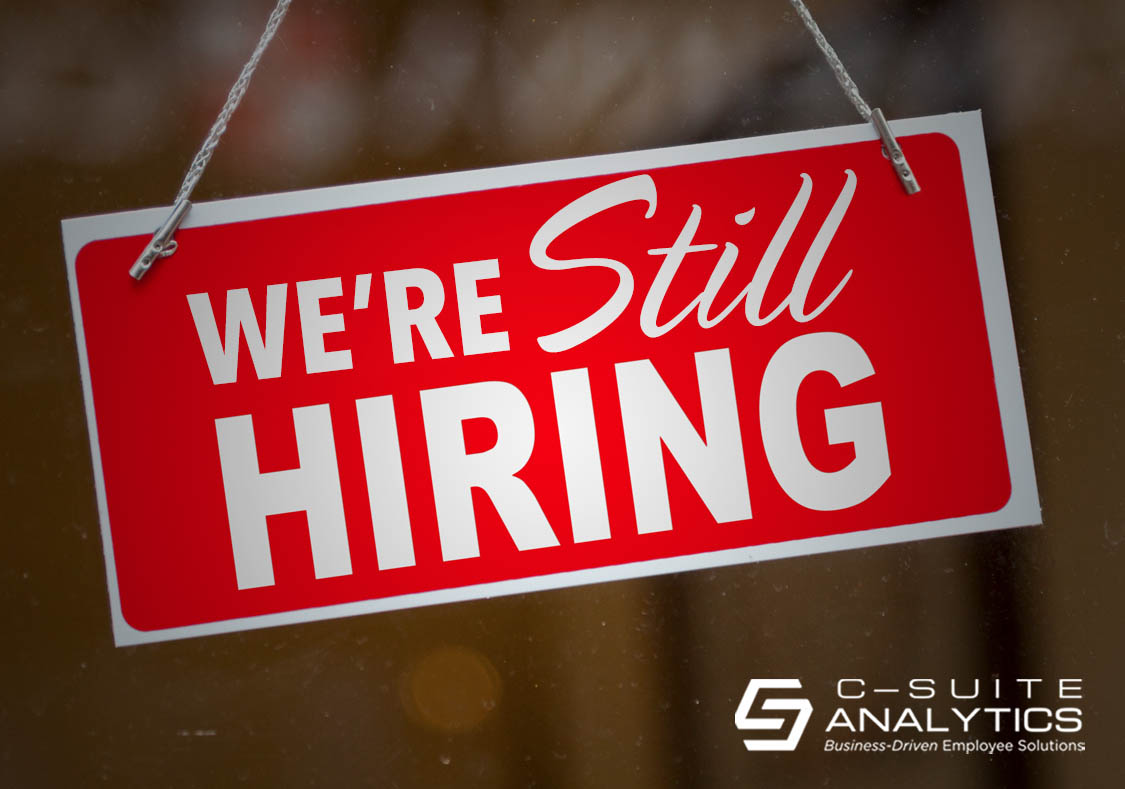Most hiring tools answer whether candidates can and will do the job, but not if they’ll stay. Learn how realistic job previews and motivational-fit interviews can improve retention from day one.
Employees Still Quitting and Companies Still Hiring During Pandemic

The U.S. Bureau of Labor Statistics is the most respected reporter of U.S. workforce data. Their most recent detailed report tells an interesting tale when one focuses on the “Difference” column below.[i] All data is reported in thousands:
| Category | July, 2020 | July, 2019 | Difference |
| Job Openings | 6,618 | 7,236 | (9%) |
| Hires | 5,455 | 5,605 | (3%) |
| Voluntary Quits | 2,949 | 3,612 | (18%) |
At a time when about 30 million U.S. workers are collecting unemployment benefits[ii] and our country has crashed into a deep recession, wouldn’t you expect that (1) the gaps in job openings and hires compared to a year ago would be higher? And the difference in the number of workers who are quitting their jobs would be much, much higher?
Let’s put this data into perspective. If 18% of our workforce is quitting, then a full 82% of those who were quitting their jobs a year ago are continuing to quit their jobs right now. I would have thought the number currently quitting jobs would be half or even less than half versus a year ago.
Isn’t this the time when workers should be so grateful they have any job at all, such that they stay locked into that job?
There continues to be a lot of action on the job-changing front. The data doesn’t lie. The report also tells us those who work in the category of “Trade, transportation, and utilities” show an actual increase in quits versus a year ago, and those in “Healthcare and social assistance” show no change during the same period, that the same percentage are quitting previously and now.
I am guessing some others are quitting because they fear the pandemic at work…teachers for example. Others might have started a job at Instacart and didn’t like it. But nearly 3 million Americans quitting their jobs in a month is a lot of people.
This data is amplified by what our customers tell us. Companies representing food production, call centers, manufacturing, and distribution report there was either an initial drop in turnover in April and May and then it picked up again…or there was never a drop at all. And these companies are asking our help to cut their turnover, as though the pandemic-induced recession never occurred.
Two other industries face other, extreme retention challenges. Connecting to the data above, hospitals might be on the cusp of a massive nursing exodus as frightened or burned-out nurses are flexing their workplace muscle to either leave the workforce or move to doctors’ offices and other safer, less stressful locations. I wrote about healthcare’s retention challenge in a recent piece that you can see here: https://c-suiteanalytics.com/chro-retaining-nurses/
And federal contractors have been immune to economic changes because their contracts with our government are locked in and fully funded…while also continuing the same poaching within their ranks for jobs ranging from engineers to pipefitters.
Our federal government’s employment impact is totally different from state and local governments’ impact because our federal government can literally print money. Whereas states, counties, and cities are cutting programs and laying off workers to make ends meet, the beat goes on with the feds. And the pre-pandemic shortages of qualified tradespeople and professionals in those massive federal contractor companies continues into today and tomorrow, too.
All of this leads to an easy prediction that within a year our federal government will pass legislation to implement the long-discussed infrastructure improvement plan…as long as the dominant party can garner enough across-the-aisle support. As much as one trillion dollars has been named as the amount for such an initiative, putting tens of thousands to work in good-paying jobs to re-build airports, roads, bridges and the rural internet, all to resuscitate our economy post-election. The short-term impact will further increase the deficit but frankly, few seem to care as long as we create more jobs, workers have money to fund restaurants and other businesses, and things begin to feel normal again.
Besides, anyone who travels internationally knows the stark difference between flying into other advanced countries and flying into the Newark airport. It’s time to make things better.
All of this data bears out perhaps the greatest lesson for HR executives today which is do not take employee retention for granted…especially with your top performers. As I said in an earlier post, losing them is the equivalent of losing four…yes, four…employees. You can see that post here: https://c-suiteanalytics.com/how-to-keep-top-performers-from-quitting/
Please email your comments to me at DFinnegan@C-SuiteAnalytics.com. You are also welcome to forward this blog to anyone you believe would find it helpful.
[i] https://www.bls.gov/
[ii] https://www.nytimes.com/live/2020/07/23/business/stock-market-today-coronavirus



